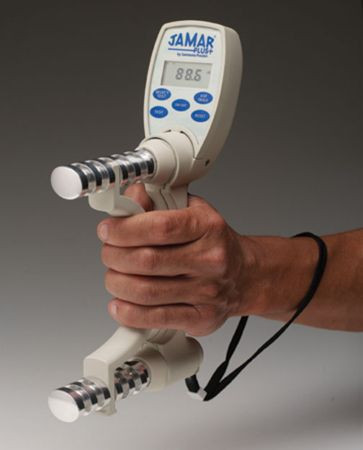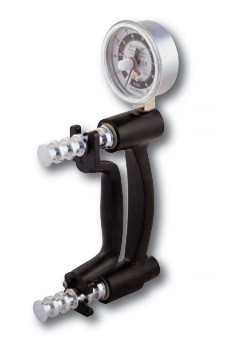 10th Oct 2016
10th Oct 2016
Hand Dynamometer: How it works and Why it’s important

There’s a saying that you can tell a lot about a person by the strength of their handshake. While that saying may be more aimed at a person’s character, it is nevertheless very true. Research has shown that grip strength can be related to and predictive of other health conditions (though not causative). Let me break down some of the health conditions grip strength can be positively related to: bone mineral density or osteoporosis, increased mortality from cardiovascular disease and from cancer in men, frailty and disability later in life. Looking at that list, measuring grip strength is pretty darn important. Not to be melodramatic (although I’m going to), but it can be the difference between predicting a future of thriving and well, death. Research has shown that the factor related to these conditions is the manner in which the muscles are used, which can be measured by hand dynamometry using a handgrip dynamometer.
How to use a Hand Dynamometer
The purpose of using a hand dynamometer is to measure the maximum isometric strength of the hand and forearm muscles. The hand dynamometer can be adjusted for hand size and must be calibrated regularly for consistent results. Also, having clear protocols regarding technique in the administration of the test will also ensure reliability.
Related Article: Hydraulic Hand Dynamometer Evaluation Kits
Hand Dynamometer instructions
Using the hand dynamometer is easy enough. The patient holds the dynamometer in the hand being tested, with the arm at right angles with the elbow by the side of the body. Adjust the handle of the dynamometer as necessary, making sure that the base rests on the first metacarpal (heel of the palm), while the handle rests on the middle of the four fingers. The patient then squeezes the hand dynamometer with maximum isometric effort for at least 5 seconds. The patient is required to not move any other part of the body and is encouraged to use maximum effort.
Hand Dynamometer test variations
Depending on the position of the arm and hand, different results can be achieved. The various positions include: the instructions per above, the arm hanging by the side and the extended arm swung above the head then out to the side during the squeezing motion.
Testing Norms for Hand Grip Dynamometers
A patient will do several trials of the test, resting for 15 seconds between each test. The best result of each trial is the one that is recorded. Below is a guide of expected results for adults. The values shown are an average of best scores for each hand.

Popular Hand Grip Dynamometers for Grip Strength Evaluation Now it has been suggested that the hand dynamometer test
can’t be a valid measure of total body strength. And sure, there are other tests which can be
used to test the strength of other muscles groups. But what the hand dynamometer does is give a
reliable and simple measurement which can be used as a predictor of future
health concerns. Its simplicity,
cost-effectiveness and time efficiency make the hand dynamometer a useful tool
in any physical therapy clinic. And
remember, you can tell the character of a person by the quality of their
handshake, but you can also use it to help predict the quality of their future.
|
Jamar Digital Hand Grip Dynamometer |
Baseline Hydraulic Hand Dynamometer |
Baseline 7 Piece Hand Evaluation Kit |
|
|








